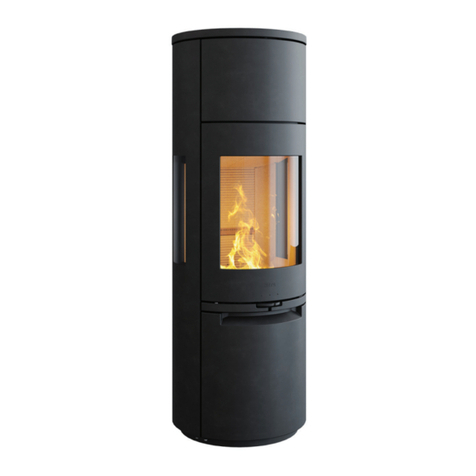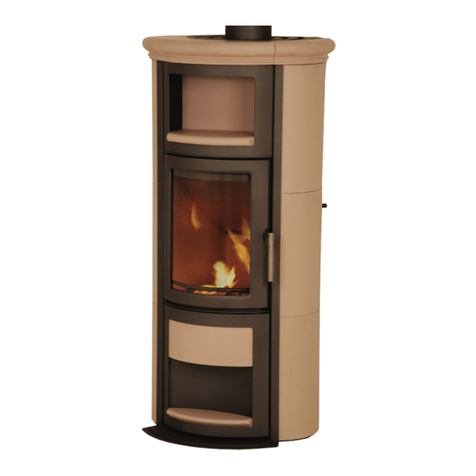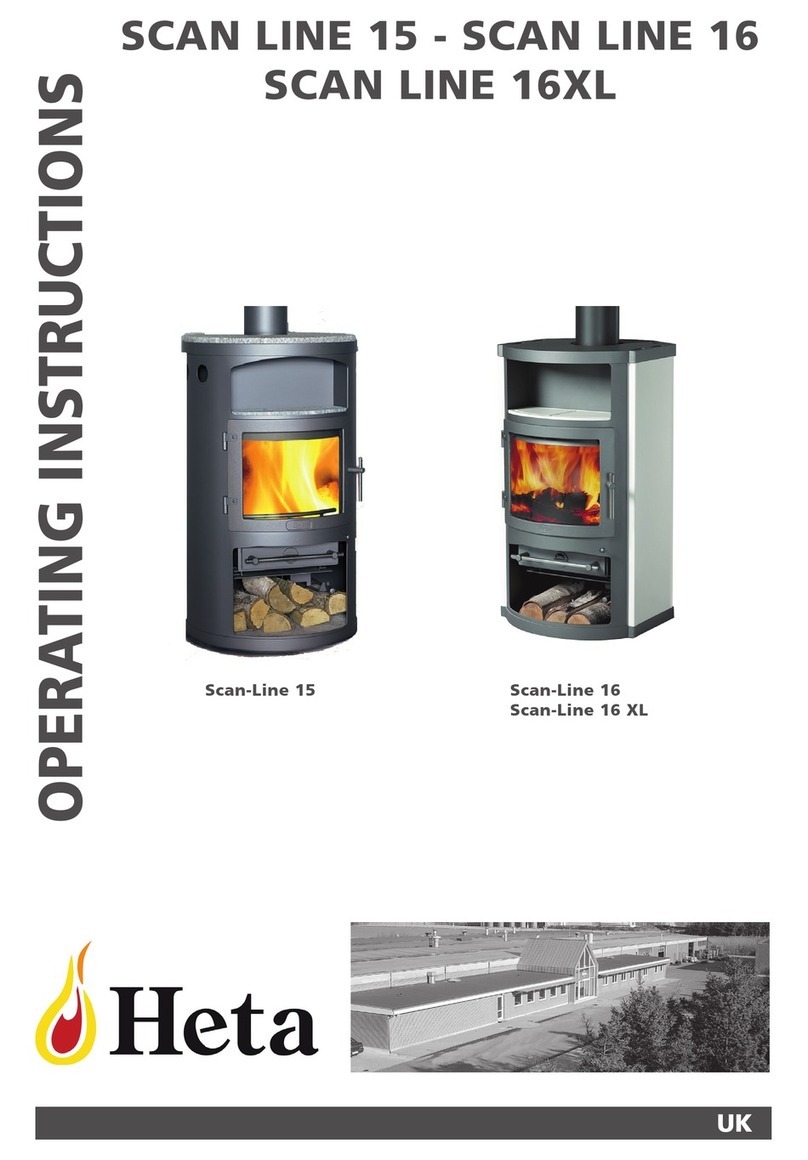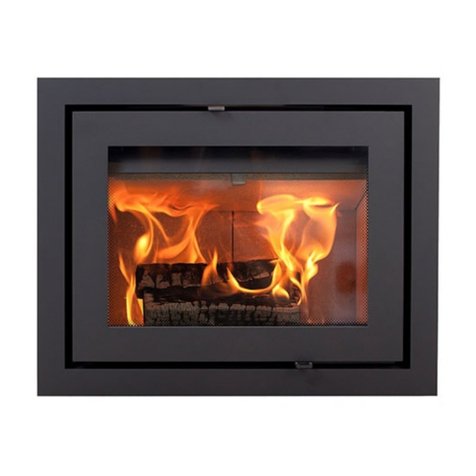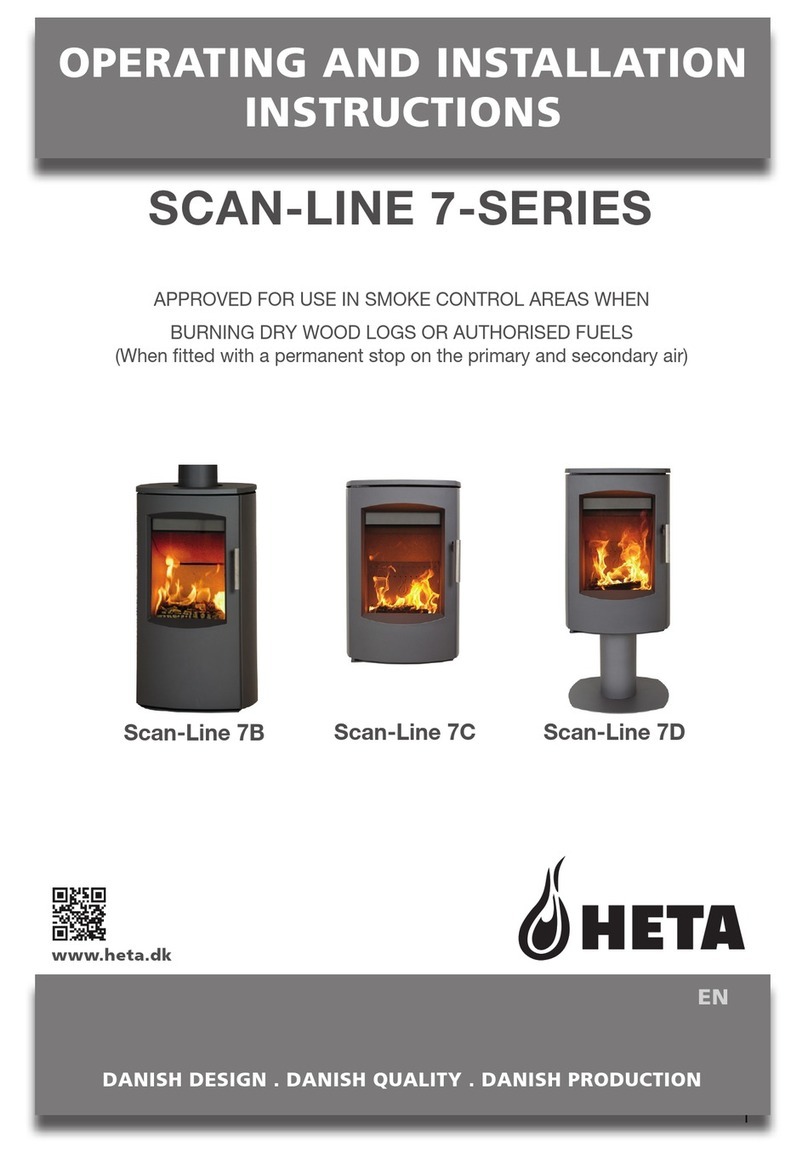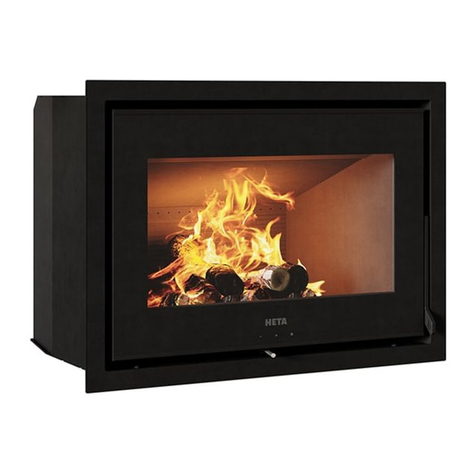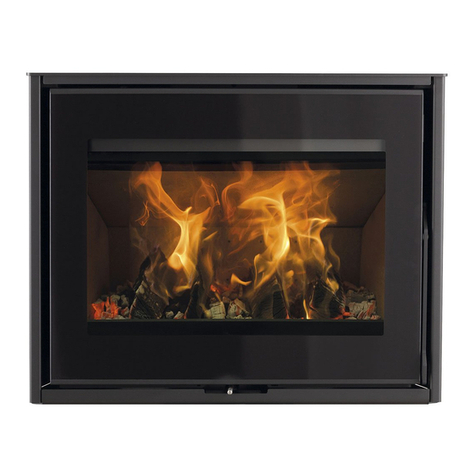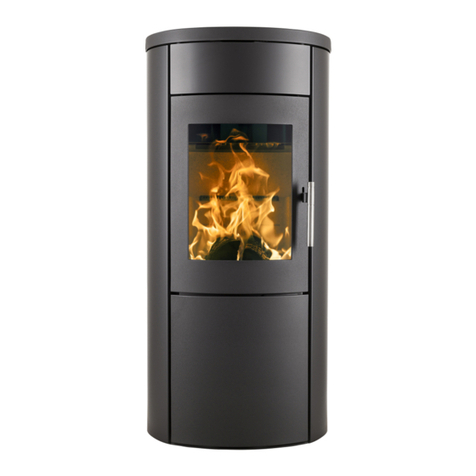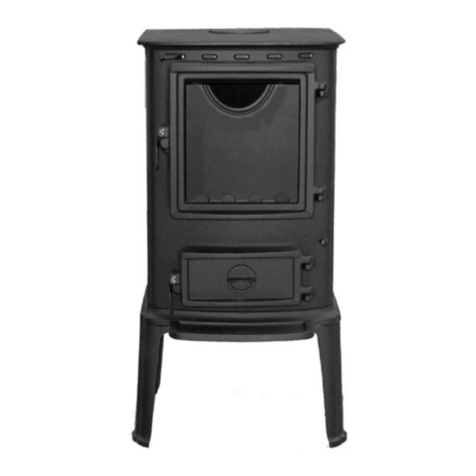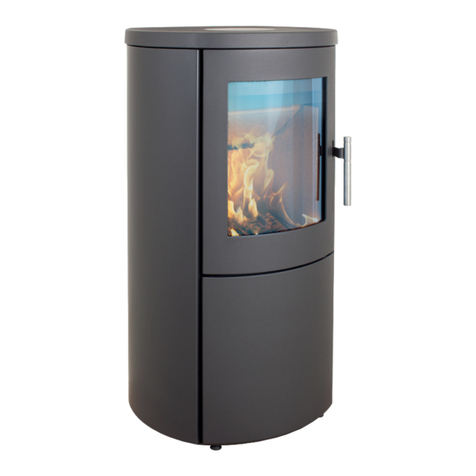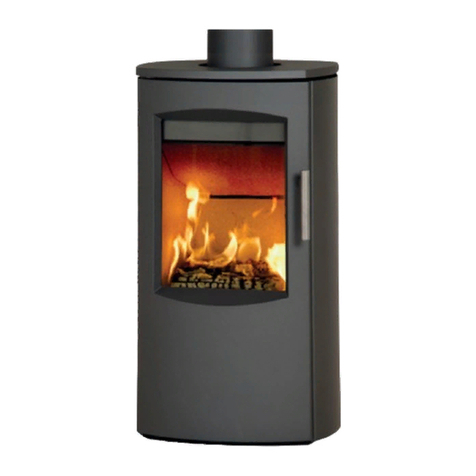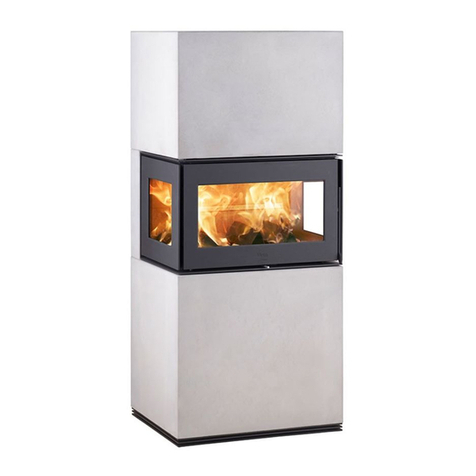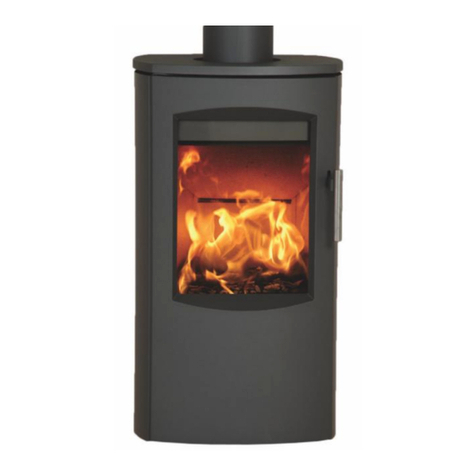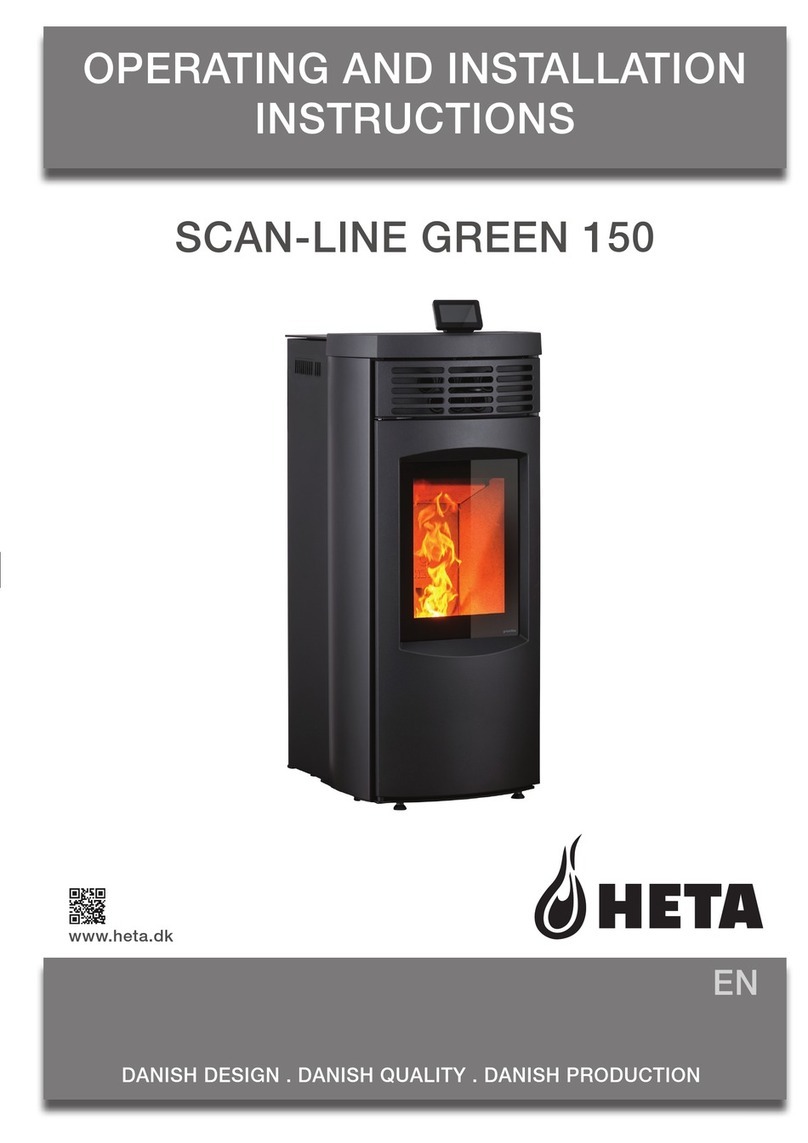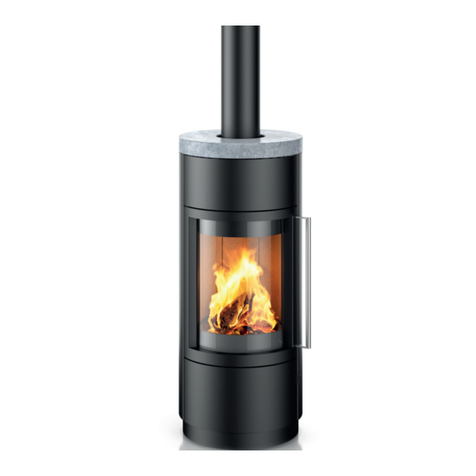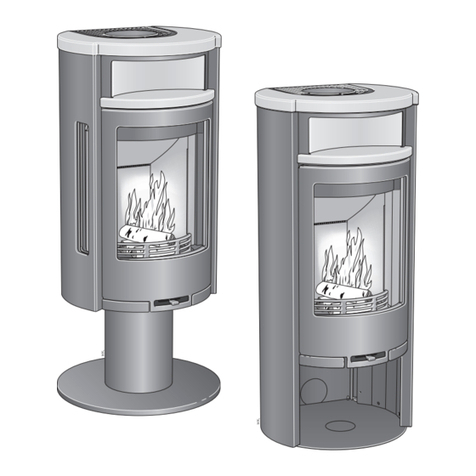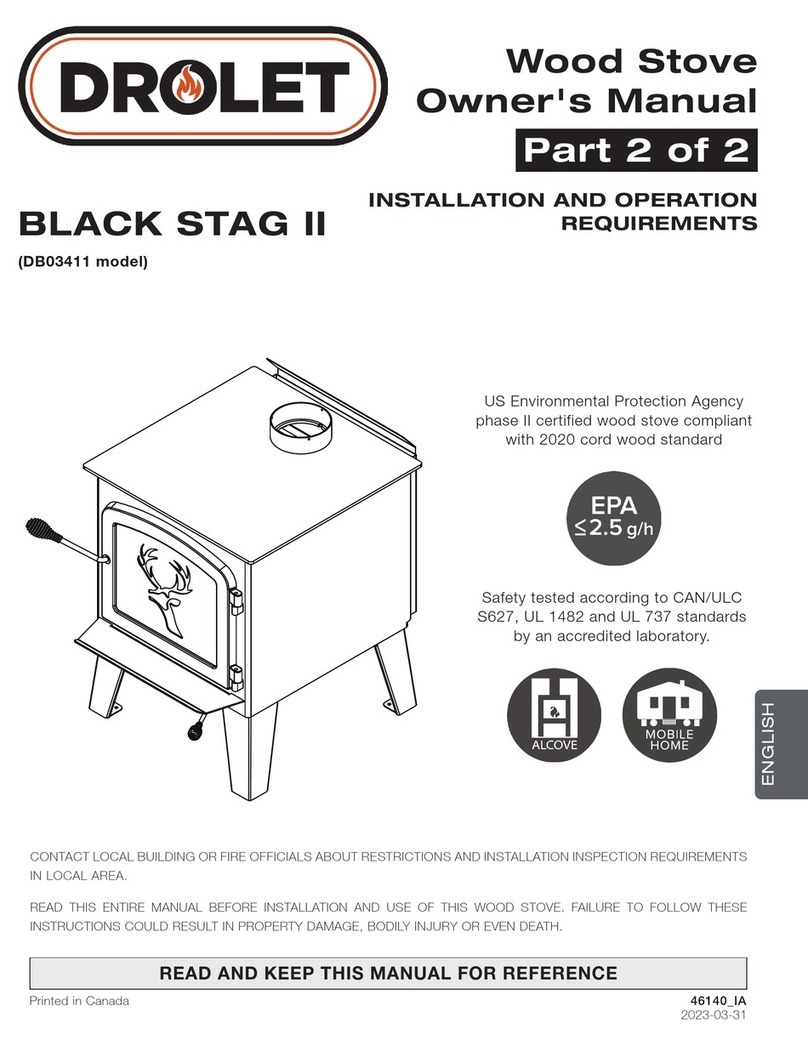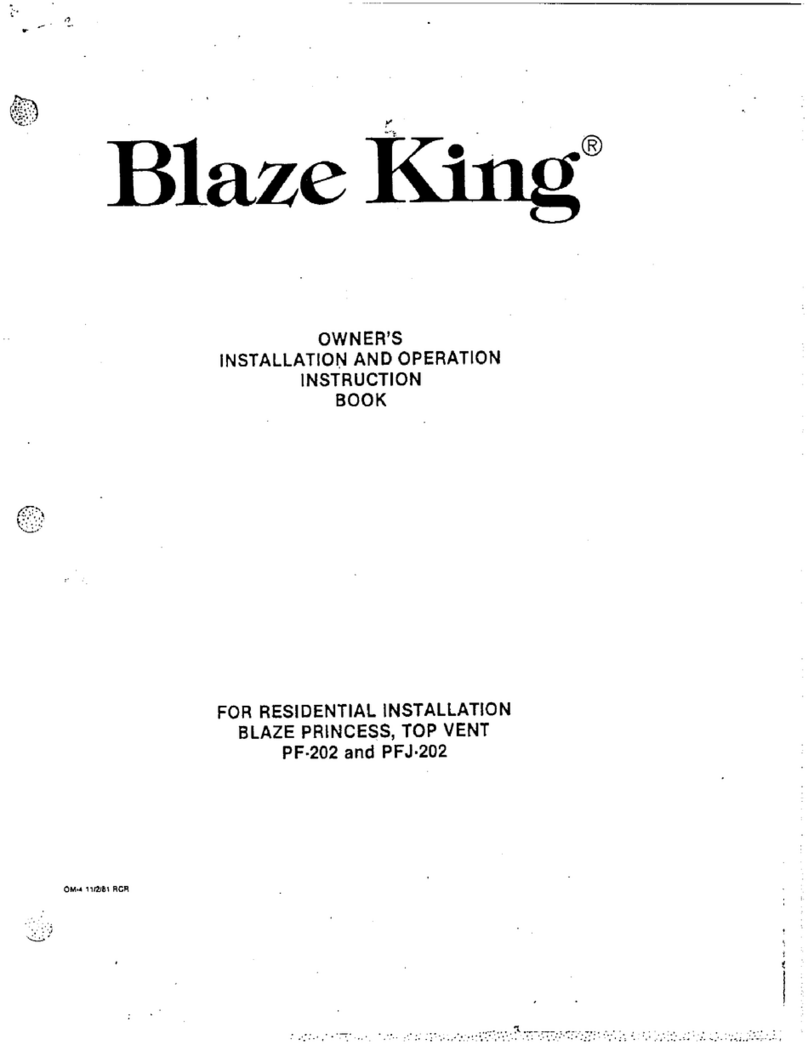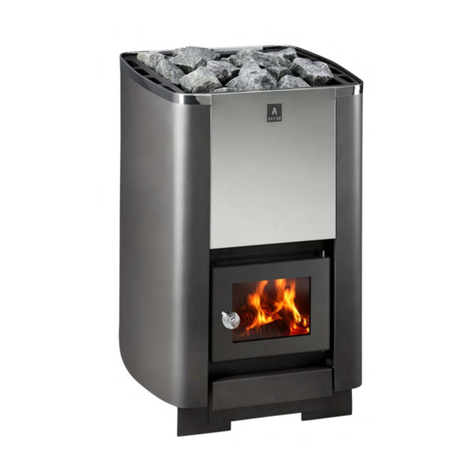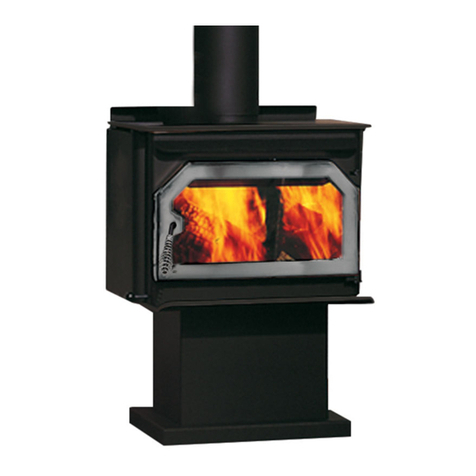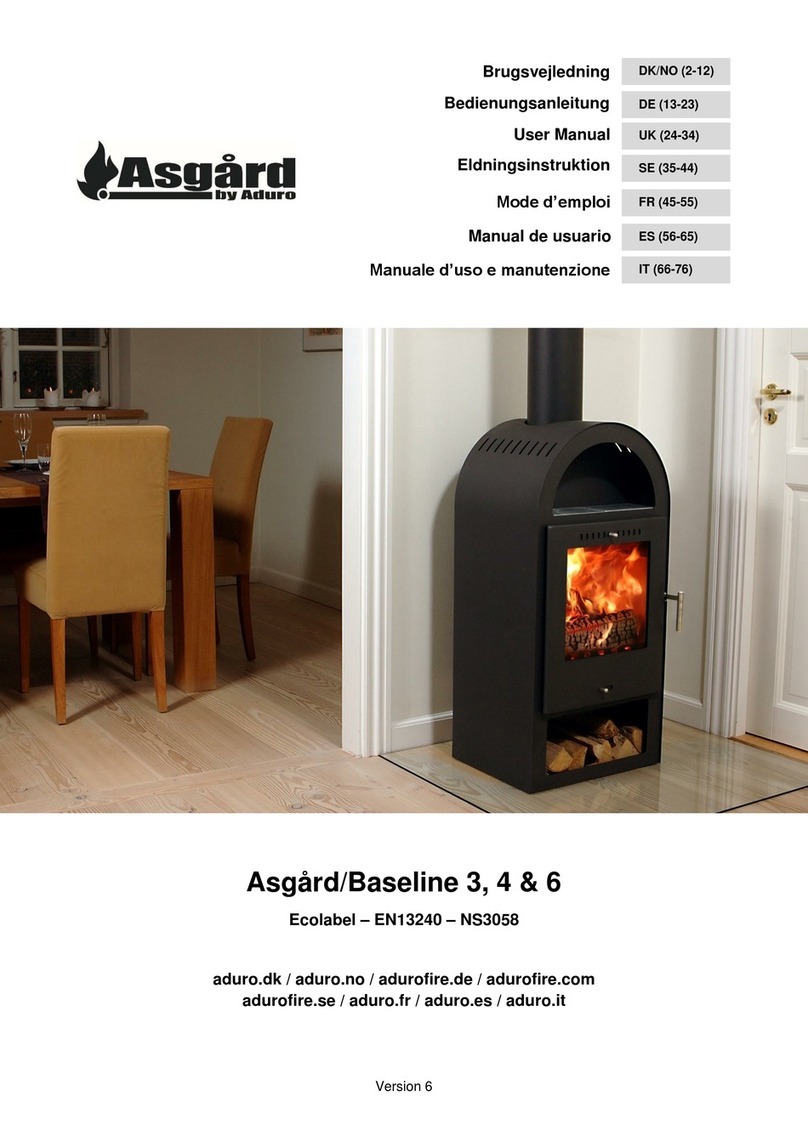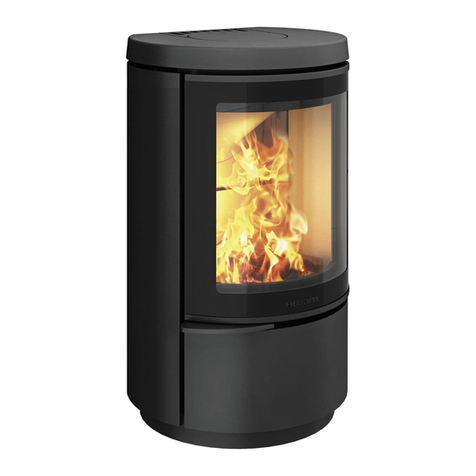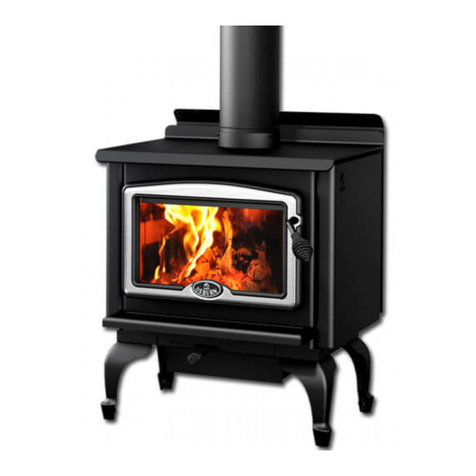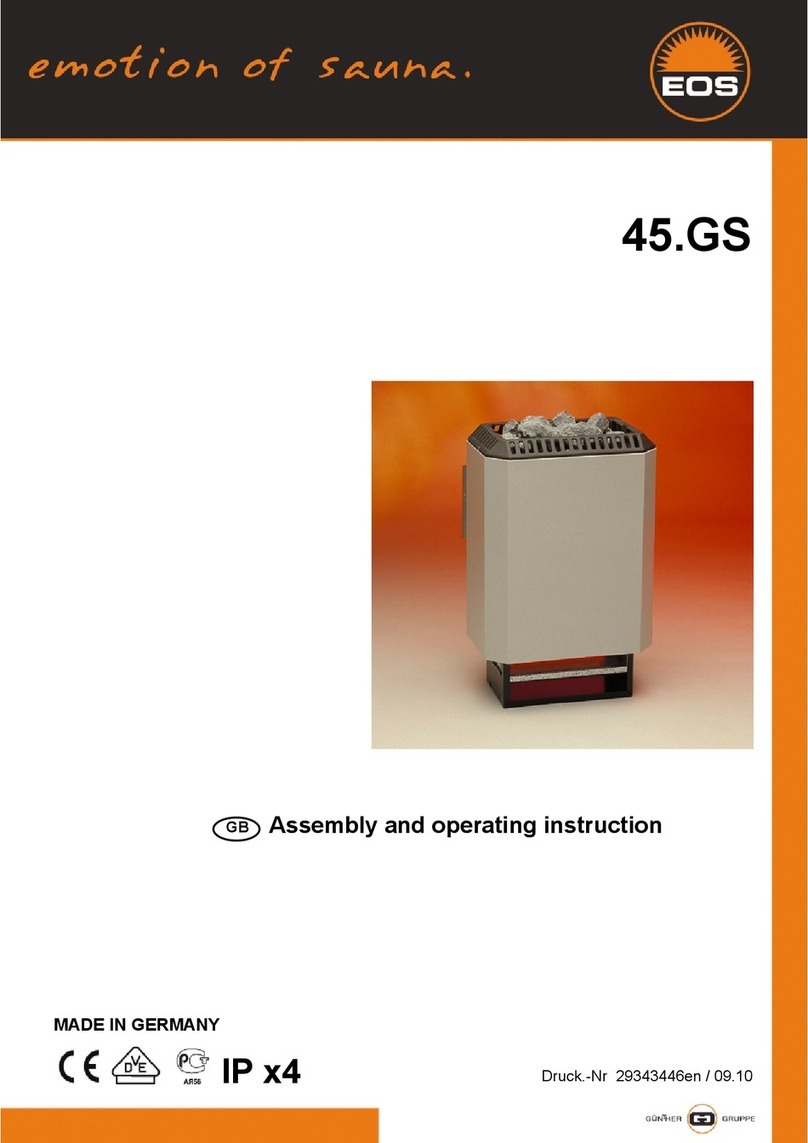
4
Chimney fires
In the event of a chimney fire – which often re-
sults from incorrect operation or protracted fi-
ring with moist wood – close the door and shut
off the secondary/start-up air supply to smother
the fire. Call the fire department.
Lighting and combustion
To open the flow of secondary air, use the ope-
rating handle at the front of the stove. The se-
condary airflow is completely open when the
handle is to the left side position, fig. 1. Shut
off the secondary airflow gradually by moving
the handle to the right. The supply is completely
shut off when the handle is to the right side po-
sition, fig. 2.
Lighting
To ignite the fuel, use fire lighters, small paraffin ig-
nition bags or small pieces of wood placed on the
bottom grate. Place larger pieces of wood on top
of this kindling material, at right angles to the firing,
doors. Completely open the secondary air supply
and leave the firing door ajar – i.e. approx. 1 cm
open. Once the fire has taken a good hold of the
fuel and the chimney has heated up (after about
10 min) close the firing door. We recommend that
you burn the entire first firing with the secondary air
supply fully open to make sure that the chimney is
thoroughly heated.
Refiring
You should normally refire the stove
while there
is still a good layer of embers
. Distribute the em-
bers across the bottom grate, place pieces of
fuel (max. 2 kg) on the embers in a single layer
perpendicular to the firing opening. Close the fi-
ring door and fully open the start-up mechanism.
The wood will then ignite very quickly – i.e. in
30 seconds or 1 minute. When the wood is bur-
ning with a steady flame, close the start-up me-
chanism. Then adjust the secondary airflow to
the level required. For nominal operation
(6,1kW),
the secondary air supply should be 38% open.
When firing, take care not to place the pieces
of fuel too close-ly together, as this will result in
poor combustion and insufficient exploitation of
the fuel.
Reduced burning
The stove is well-suited to intermittent use. If
you wish to operate the stove with reduced out-
put, simply insert smaller volumes of wood at
each firing, and apply a lower airflow. However,
remember that the secondary combustion air
supply must never be shut off completely du-
ring firing. It is important to keep a good bed of
embers. Gentle heat is released when the fire
settles - i.e. when the wood no longer genera-
tes flames and has been converted to glowing
embers.
Optimal firing
To achieve optimal firing and the highest pos-
sible effect, it is important to make sure that the
air supply is used correctly. As a general rule,
the secondary air is to be used to control the
fire to ignite the flue gases. This produces a
high effect and keeps the glass panel complet-
ely clear of soot as the secondary air “washes”
down over it. Please note that the stove will,
naturally, produce soot if both the start-up me-
chanism and secondary air intakes are closed
completely. This will prevent oxygen from being
drawn into the stove, and the viewing window
and other parts will become covered with soot.
If this situation is combined with firing with wet
wood, the build-up of soot can become so
thick and sticky that the sealing rope can, for
example, become detached when the door is
opened the next day.
Risk of explosion
After you add new fuel, it is very
important that you do not leave the
stove unattended until the wood is
burning constantly. This will normal-
ly occur within 30 to 60 seconds.
A risk of explosion can possibly arise if too
much wood is placed in the stove. This may re-
sult in the production of large volumes of gas,
and this gas can explode if the intake of primary
and secondary air is insufficient.
It is an advantage always to leave some ash ly-
ing in the bottom of the comb-
stion chamber.
Take care when emptying the ash pan, as
cinders can continue to burn in the ash for
long periods of time.
Open Closed
Fig. 1 Fig. 2
















